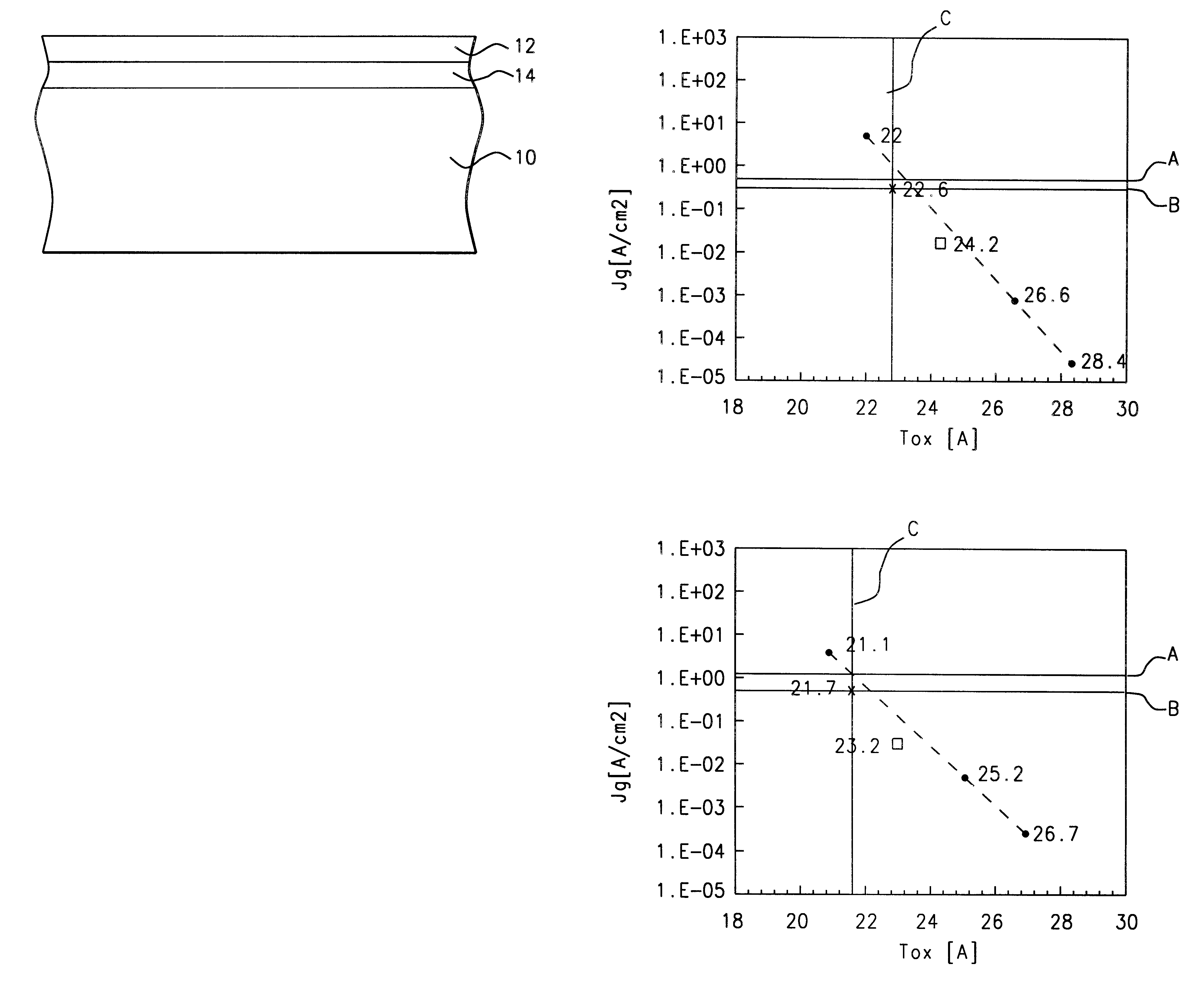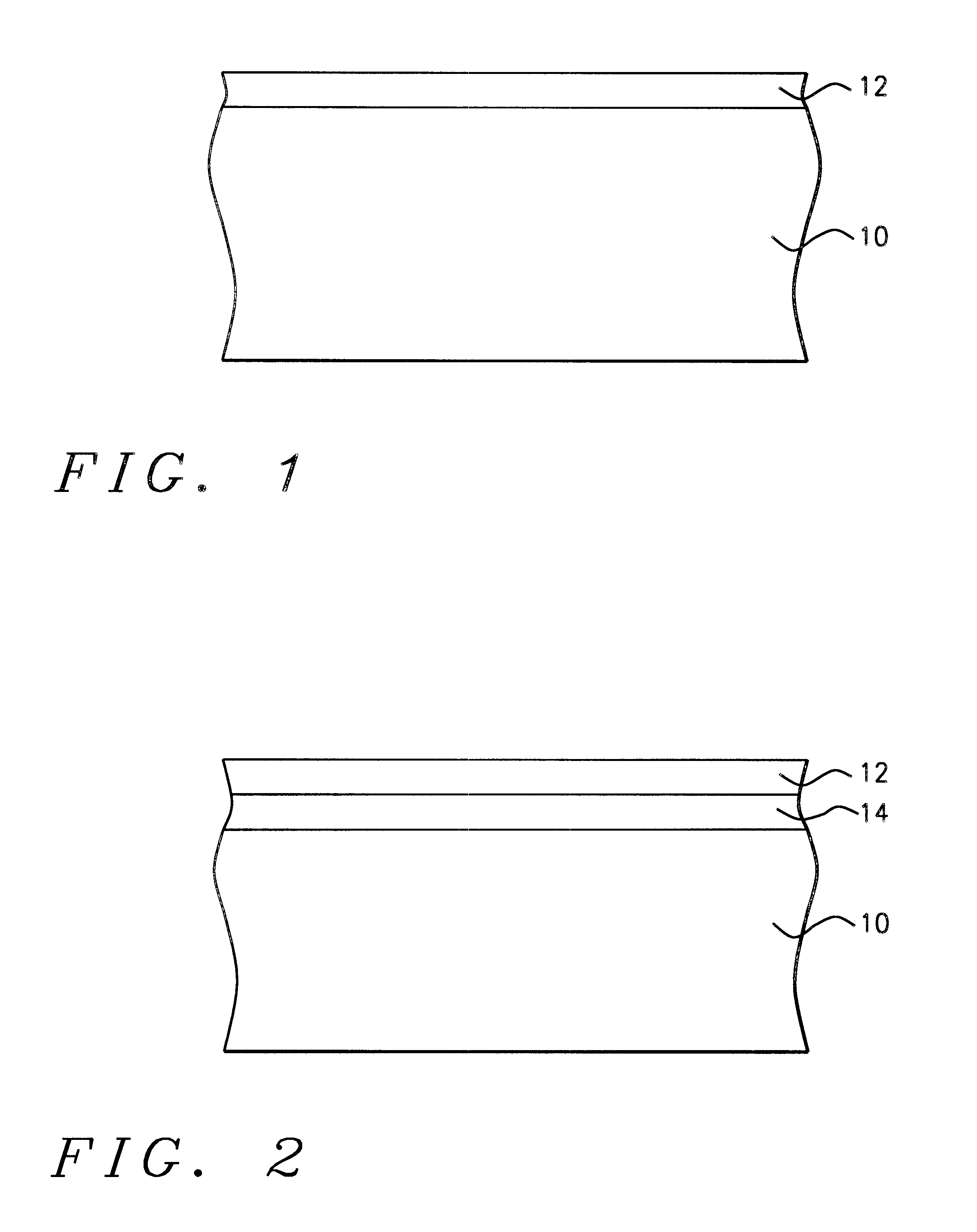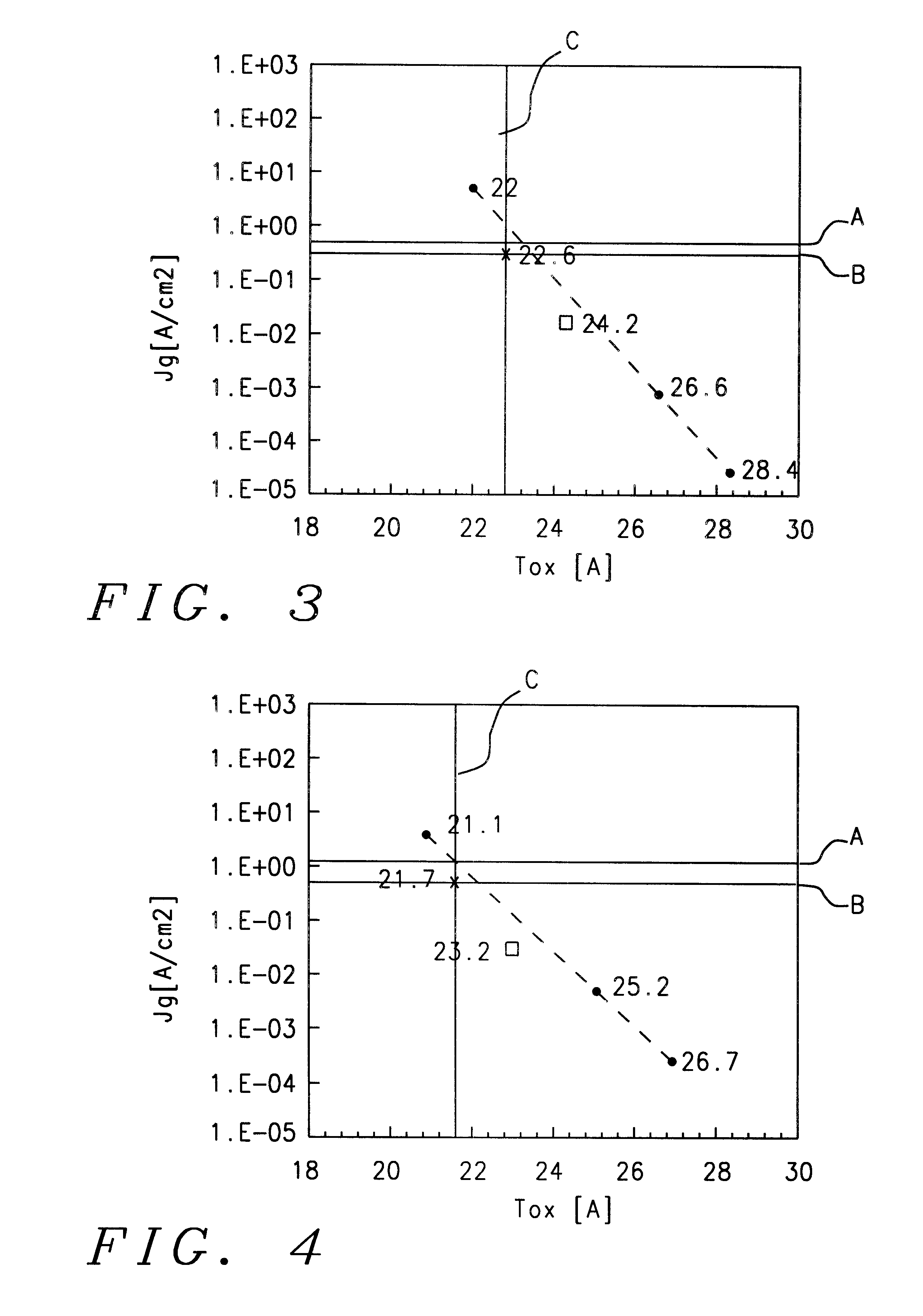Method for making silicon nitride-oxide ultra-thin gate insulating layers for submicrometer field effect transistors
a field effect transistor and ultra-thin technology, applied in the field of integrated circuit device manufacturing, can solve the problems of unstable electrical characteristics of the fet device, unacceptable standby power of the fet,
- Summary
- Abstract
- Description
- Claims
- Application Information
AI Technical Summary
Benefits of technology
Problems solved by technology
Method used
Image
Examples
Embodiment Construction
To better appreciate the advantages of this novel process for making ultra-thin FET gate insulating layers, test structures were fabricated and the nitride-oxide gate oxide leakage currents were measured as a function of gate oxide thickness. The results were then compared with the more conventional ISSG process using nitrous oxide (NO) as the oxidation gas. The graph in FIG. 3 is for a gate oxide grown on an N-doped substrate (or wafer), and the graph in FIG. 4 is for a gate oxide grown on a P-doped substrate. The vertical axis in each graph is the leakage current density J.sub.g measured on a log scale in Ampere per square cm (A / cm.sup.2), and the horizontal axis is the gate oxide thickness T.sub.ox measured in Angstroms. After forming the ultra-thin silicon nitride-oxide gate insulating layer (layers 12 and 14), an N-doped polysilicon gate electrode was formed over an oxide area of 1.0 E .sup.- 4 cm.sup.2. The current density was measured using a model HP4284 instrument manufactu...
PUM
 Login to View More
Login to View More Abstract
Description
Claims
Application Information
 Login to View More
Login to View More - R&D
- Intellectual Property
- Life Sciences
- Materials
- Tech Scout
- Unparalleled Data Quality
- Higher Quality Content
- 60% Fewer Hallucinations
Browse by: Latest US Patents, China's latest patents, Technical Efficacy Thesaurus, Application Domain, Technology Topic, Popular Technical Reports.
© 2025 PatSnap. All rights reserved.Legal|Privacy policy|Modern Slavery Act Transparency Statement|Sitemap|About US| Contact US: help@patsnap.com



